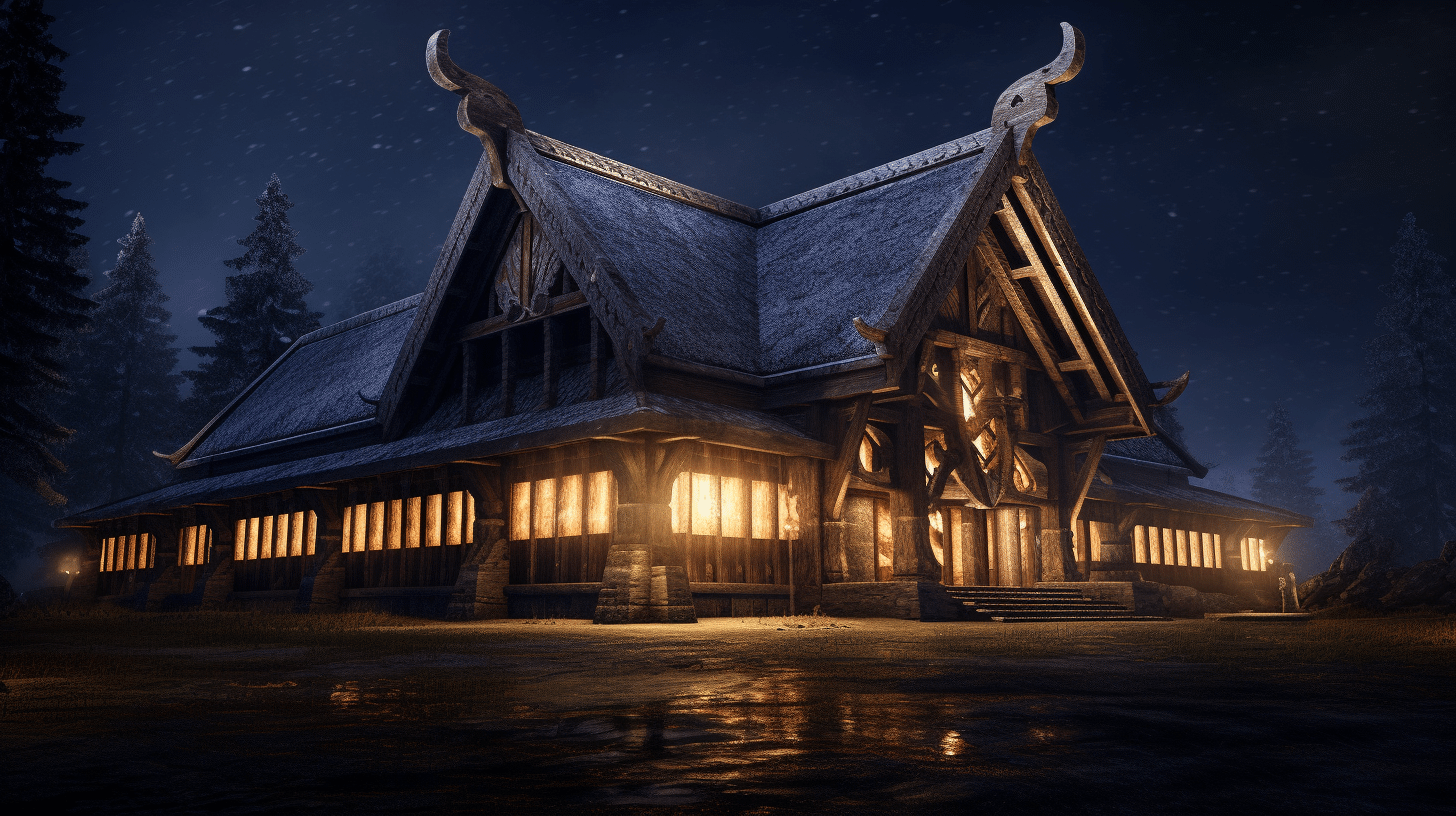
What is a Norse Hall?
A Norse hall, also known as a “mead hall” or “longhouse,” was typically a large, rectangular building constructed with timber and thatched roof. The design of the hall varied depending on the region and the status of its owner, but generally, it consisted of a central open space that served as the heart of the hall. This area was surrounded by a row of wooden pillars that supported the roof and divided the space into smaller sections.
The hall played a vital role in the social fabric of Norse communities. It was a place where feasts, celebrations, and gatherings were held, fostering a sense of camaraderie and reinforcing social bonds. The Norse hall was often associated with the leader or chieftain of the community, who used it as a place to hold court, receive guests, and make important decisions. These gatherings often included storytelling, music, poetry, and the consumption of copious amounts of mead.

The significance of the Norse hall extended beyond socializing and feasting. It served as a symbol of power, wealth, and status within the community. The larger and more elaborately decorated the hall, the higher the status of its owner. The walls of the hall were adorned with tapestries, shields, weapons, and other valuable items, showcasing the wealth and accomplishments of its inhabitants.
Furthermore, they all had a practical function as dwelling places. It accommodated not only the chieftain and his family but also members of his household, warriors, and retainers. These individuals lived and slept in the hall, sharing the communal space. Sleeping quarters, storage areas, and workspaces were often located along the sides of the Norse hall, separated from the central area.
In times of conflict or danger, the Norse Hall also served as a defensive structure. Its solid construction and large entrance doors made it a formidable stronghold. During raids or attacks, the hall could be fortified, and its defenders would take up arms to protect their community and its valuable resources. In summary, the hall was a multi-purpose structure of great significance in Norse society.
It functioned as a gathering place for feasts and celebrations, a venue for important meetings and decision-making, a symbol of power and wealth, a dwelling for the chieftain and his household, and a defensive stronghold when needed. The Norse halls were integral to Norse culture and played a central role in the social, political, and cultural life of the Norse community.